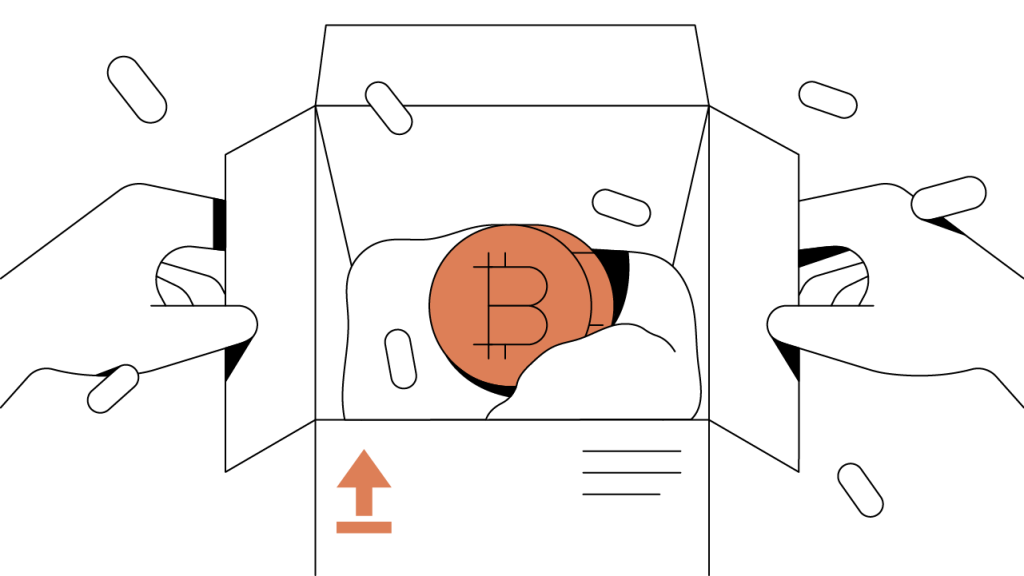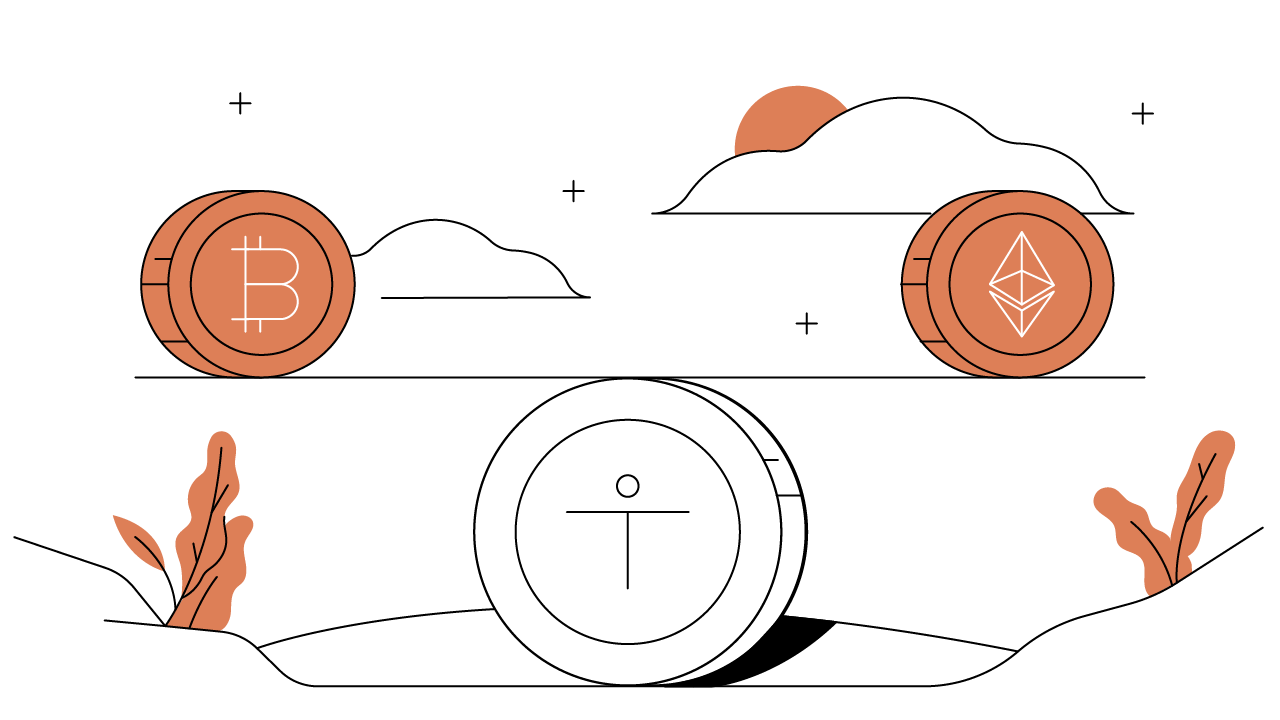wBTC: What Is Wrapped Bitcoin?
Wrapped Bitcoin can bring the value and liquidity of Bitcoin to Ethereum’s DeFi ecosystem. How exactly can wBTC achieve this compatibility?
Updated October 4, 2023 • 3 min read

Summary
Wrapped bitcoin (wBTC) is a converted version of bitcoin that can be used on Ethereum’s growing network of decentralized applications. The wBTC protocol has brought increased liquidity to the decentralized finance (DeFi) ecosystem and has given bitcoin holders access to a variety of financial services not previously available to them.
What Is wBTC?
Wrapped bitcoin (wBTC) is bitcoin that has been converted for use on the Ethereum ecosystem. Launched in January 2019, wBTC is an Ethereum token that’s backed one-to-one by bitcoin (BTC), which means that one wBTC is always equal to one bitcoin. The wBTC token allows users to interact with a variety of Ethereum’s decentralized apps (dApps) and, in particular, Ethereum’s decentralized finance (DeFi) ecosystem.
The wBTC token was built using Ethereum’s ERC-20 token standard to provide bitcoin liquidity to the DeFi ecosystem. Cryptocurrency users who only owned bitcoin were previously unable to access and use the DeFi dApps being built on the Ethereum protocol, and DeFi projects identified an opportunity to tap into the larger market capitalization and higher trading volume of the bitcoin community through wBTC Ethereum tokens.
A standard use for wBTC is as collateral, or a pledge for loan repayment, when taking out a cryptocurrency loan on DeFi platforms. Upon repayment of the crypto borrowed, the collateral, in the form of wBTC, is returned. If the collateral is liquidated, the wBTC is recouped by the platform.
The Benefits of wBTC
Wrapped bitcoin has brought more liquidity to decentralized exchanges (DEXs) and other DeFi applications operating on the Ethereum blockchain. As the number of merchants, exchanges, and wallets accepting wBTC grows, so does the amount of bitcoin being converted into wBTC Ethereum tokens. According to DeFi analytics hub DeFi Pulse, the total value of the wBTC market grew from $665 million to $848 million between August 1 and September 20, 2020.
Wrapping bitcoin for Ethereum interoperability has shattered both technical and conceptual boundaries. Prior to innovations like wBTC, the value and user base of Bitcoin were restricted from engaging in decentralized finance. Further, years of market speculation between BTC and ETH contributed to what are known as ‘chain-maximalist’ perspectives that tend to favor one blockchain at the expense of others. Tech like wBTC offers a way for Bitcoin as a technology and its holders to gain exposure to the Ethereum DeFi ecosystem and even earn interest on holdings — all without diminishing their overall BTC holdings. This has created a shared incentive between Ethereum and Bitcoin, thereby rolling back maximalist notions and increasing network effects, while reducing the hassle and perceived risk of trading tokens out of the Bitcoin network.
Another benefit of wBTC is speed. Wrapped bitcoin transactions clear more quickly than bitcoin transactions because wBTC is settled on the Ethereum blockchain, which adds a new block every 15 seconds, while BTC is settled on the Bitcoin blockchain, which adds a new block every ten minutes. Because of this functionality, wBTC can move between Ethereum wallets, exchanges, and services much more rapidly than BTC.
How wBTC Works
Wrapped bitcoin is created when you request Ethereum-based ERC-20 tokens from a merchant in exchange for your bitcoin. Upon receipt of the request, the merchant then carries out a Know Your Customer (KYC) and Anti-Money Laundering (AML) process to verify your identity and initiates a transaction with a custodian (BitGo is currently the only custodian for wBTC). The custodian then mints a certain number of wBTC and sends them to the merchant’s Ethereum address.
Next, you and the merchant either perform a trade through a centralized exchange (CEX) or a peer-to-peer transaction (known as an atomic swap) on a decentralized exchange, leaving the merchant with bitcoin and you with your wBTC. Once the transaction is finalized, you will then have the option to utilize your wBTC tokens on various DeFi platforms like Compound and MakerDAO. When you want to convert your wBTC back to bitcoin, you make a request again to the merchant and the wBTC is traded back. The merchant then destroys the wBTC in what is known as a burn transaction.
Who Created Wrapped Bitcoin?
The initial developers of the wrapped bitcoin protocol were BitGo Inc, Kyber Network, and Ren (formerly Republic Protocol). This consortium released the wBTC whitepaper on January 24, 2019, and on January 31, 2019 the token was launched with eight merchants facilitating bitcoin-to-wBTC conversions. Additional merchants followed thereafter.
The wBTC protocol is controlled by a decentralized autonomous organization (DAO). As of this writing, the wBTC DAO has 17 members representing stakeholders from around the DeFi ecosystem. Wrapped bitcoin DAO members each hold a key to the multi-signature wallet that secures the system. With these keys, members can vote to add or remove members and to make changes to the smart contracts on which the system is built. The public can view both the minting and burning of wBTC on the Ethereum and Bitcoin blockchains. As an additional safeguard, BitGo audits the system regularly and initiates a proof of reserve transaction on the Bitcoin blockchain, which allows individuals to verify that bitcoin reserves are valid. The development and use of wBTC is a sign that interoperability between Bitcoin and Ethereum facilitates DeFi’s growth and has the potential to add value for users in the rapidly maturing crypto ecosystem.
Cryptopedia does not guarantee the reliability of the Site content and shall not be held liable for any errors, omissions, or inaccuracies. The opinions and views expressed in any Cryptopedia article are solely those of the author(s) and do not reflect the opinions of Gemini or its management. The information provided on the Site is for informational purposes only, and it does not constitute an endorsement of any of the products and services discussed or investment, financial, or trading advice. A qualified professional should be consulted prior to making financial decisions. Please visit our Cryptopedia Site Policy to learn more.

Is this article helpful?


